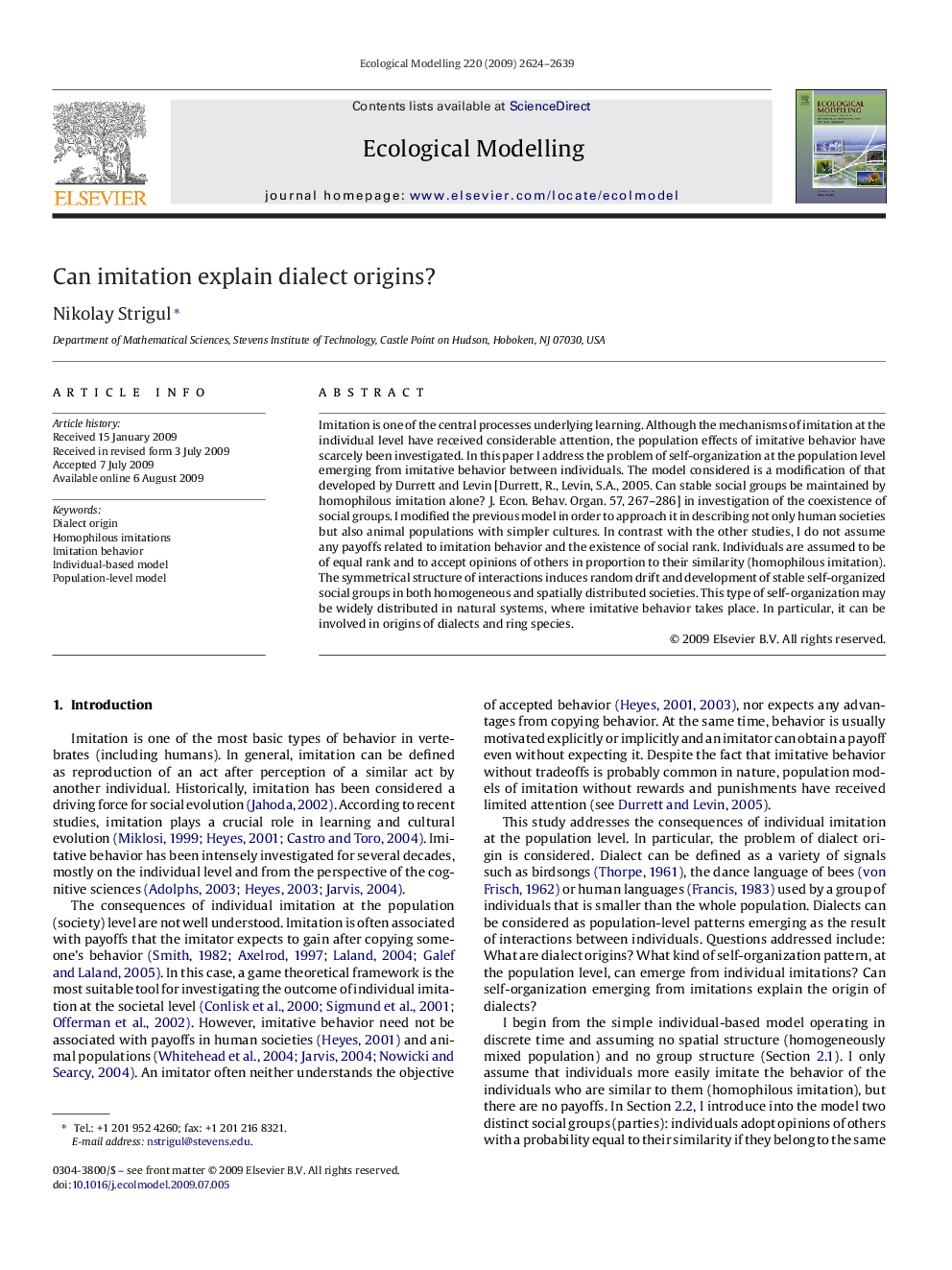| Article ID | Journal | Published Year | Pages | File Type |
|---|---|---|---|---|
| 4377545 | Ecological Modelling | 2009 | 16 Pages |
Imitation is one of the central processes underlying learning. Although the mechanisms of imitation at the individual level have received considerable attention, the population effects of imitative behavior have scarcely been investigated. In this paper I address the problem of self-organization at the population level emerging from imitative behavior between individuals. The model considered is a modification of that developed by Durrett and Levin [Durrett, R., Levin, S.A., 2005. Can stable social groups be maintained by homophilous imitation alone? J. Econ. Behav. Organ. 57, 267–286] in investigation of the coexistence of social groups. I modified the previous model in order to approach it in describing not only human societies but also animal populations with simpler cultures. In contrast with the other studies, I do not assume any payoffs related to imitation behavior and the existence of social rank. Individuals are assumed to be of equal rank and to accept opinions of others in proportion to their similarity (homophilous imitation). The symmetrical structure of interactions induces random drift and development of stable self-organized social groups in both homogeneous and spatially distributed societies. This type of self-organization may be widely distributed in natural systems, where imitative behavior takes place. In particular, it can be involved in origins of dialects and ring species.
